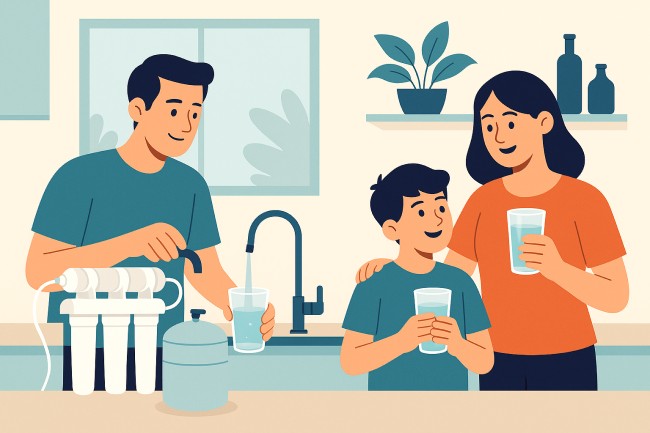The Ultimate Guide to Water Purification for Your Family’s Health

Ensuring the water flowing from your taps is clean and safe is a cornerstone of a healthy home. While municipal water systems are treated to meet specific safety standards, various factors can affect water quality by the time it reaches your glass. This guide explores the importance of water purification and outlines common methods to help you provide the best water for your family.
Why Water Quality Matters
Access to clean water is essential for overall health. It plays a vital role in everything from hydration and digestion to food preparation. Contaminants, whether naturally occurring or from environmental sources, can find their way into water supplies. These can include minerals, chemicals, bacteria, and other microorganisms. Long-term exposure to certain impurities may pose health risks, making water purification a proactive step toward protecting your household. Understanding what is in your water is the first step to choosing an appropriate solution.
Understanding Common Water Contaminants
Water can carry a variety of substances. Knowing what you might be dealing with can help you select the most effective purification method for your needs.
Types of Impurities
- Microbiological Contaminants: These include bacteria, viruses, and parasites. While public water treatment is designed to eliminate these issues like pipe breaks or runoff can sometimes lead to contamination.
- Chemical Contaminants: This category includes pesticides, herbicides, industrial chemicals, and disinfection byproducts. Their presence can vary greatly depending on your geographic location and proximity to agricultural or industrial areas.
- Heavy Metals: Lead, mercury, and arsenic are examples of heavy metals that can leach into water from old plumbing or natural deposits.
- Excess Minerals: While not always a health risk, high concentrations of minerals like calcium and magnesium cause “hard water.” Hard water can lead to scale buildup in pipes and appliances, reduce the effectiveness of soap, and affect the taste of your water. Many households find that installing a water softener in Salt Lake City or other areas with hard water can resolve these issues.
Popular Water Purification Methods
Several technologies are available to improve the quality of your home’s water. Each method targets different types of contaminants, so the best choice depends on your specific water quality concerns.
Filtration Systems
Water filtration is a broad category of systems that use a physical barrier or a chemical process to trap impurities.
- Activated Carbon Filters: Commonly found in pitcher filters and faucet-mounted units, these filters are effective at reducing chlorine, pesticides, and some organic compounds. They are known for improving the taste and odor of water.
- Sediment Filters: These are designed to remove larger particles like sand, silt, and rust. They are often used as a pre-filter in more complex multi-stage purification systems to protect more sensitive components.
Reverse Osmosis (RO)
Reverse osmosis is a highly effective purification process that forces water through a semipermeable membrane. This membrane has extremely small pores that block a wide range of contaminants, including heavy metals, salts, and dissolved solids. RO systems typically include multiple stages of filtration, offering a comprehensive solution for producing very pure drinking water.
UV Purification
Ultraviolet (UV) purification systems use UV light to neutralize microbiological contaminants. As water passes through the system, it is exposed to a UV lamp that destroys the DNA of bacteria, viruses, and other pathogens, rendering them harmless. This method is chemical-free and does not alter the taste or odor of the water. It is often paired with a sediment filter to ensure the water is clear, allowing the UV light to work effectively.
Choosing the Right System for Your Home
Selecting the ideal water purification method involves a few key considerations.
- Identify Your Needs: Start by understanding your water quality. You can obtain a water quality report from your local utility provider or conduct a home water test. This will help you identify the specific contaminants you need to address.
- Evaluate System Types: Compare the different methods based on the contaminants they remove. A carbon filter might be sufficient for improving taste, while a reverse osmosis system offers broader protection.
- Consider Your Budget and Maintenance: Purification systems vary in initial cost and ongoing maintenance requirements. Consider the price of the unit, installation fees, and the long-term cost of replacing filters or other components.
By taking a thoughtful approach to water purification, you can ensure your family has continuous access to clean, safe, and great-tasting water every day.



